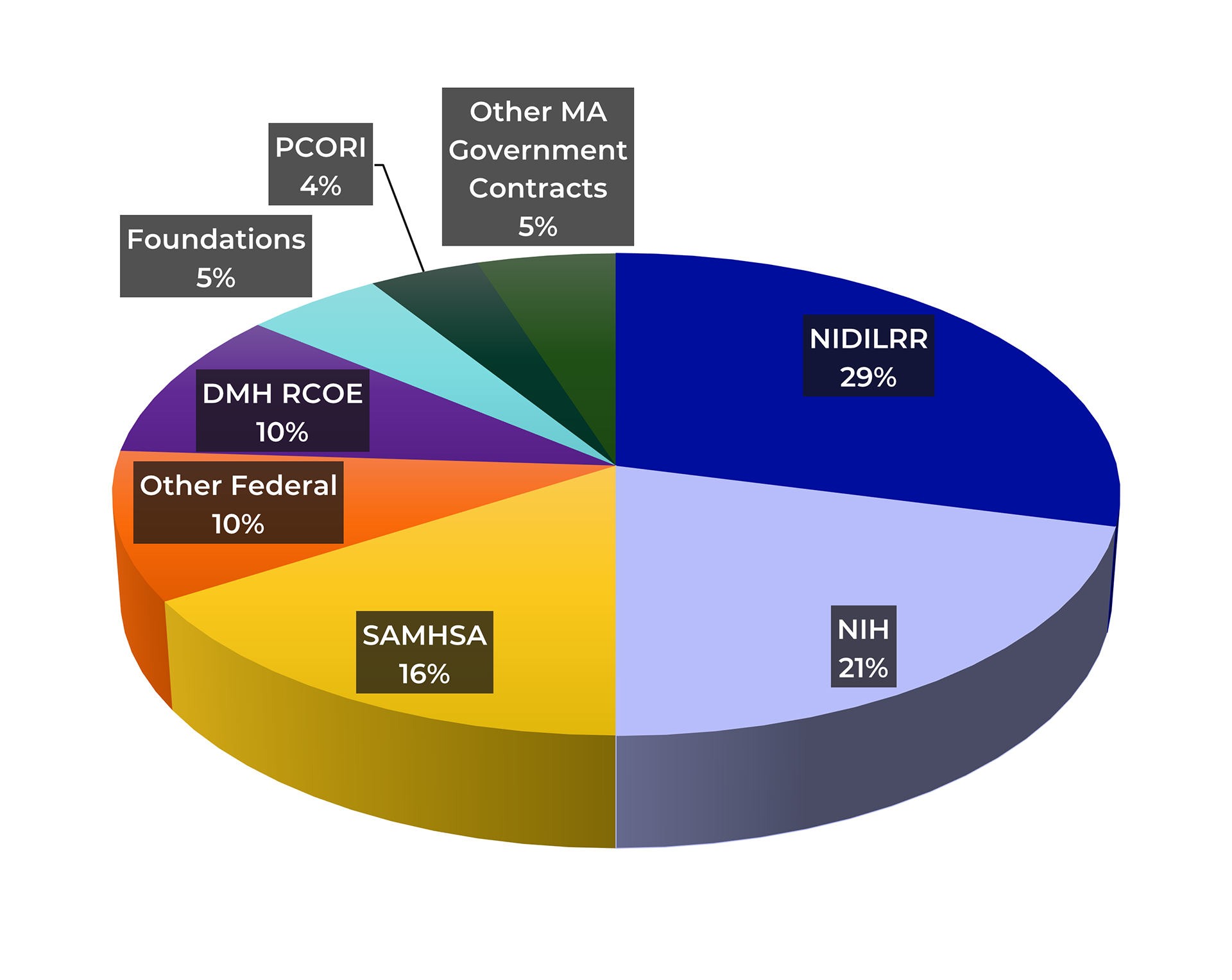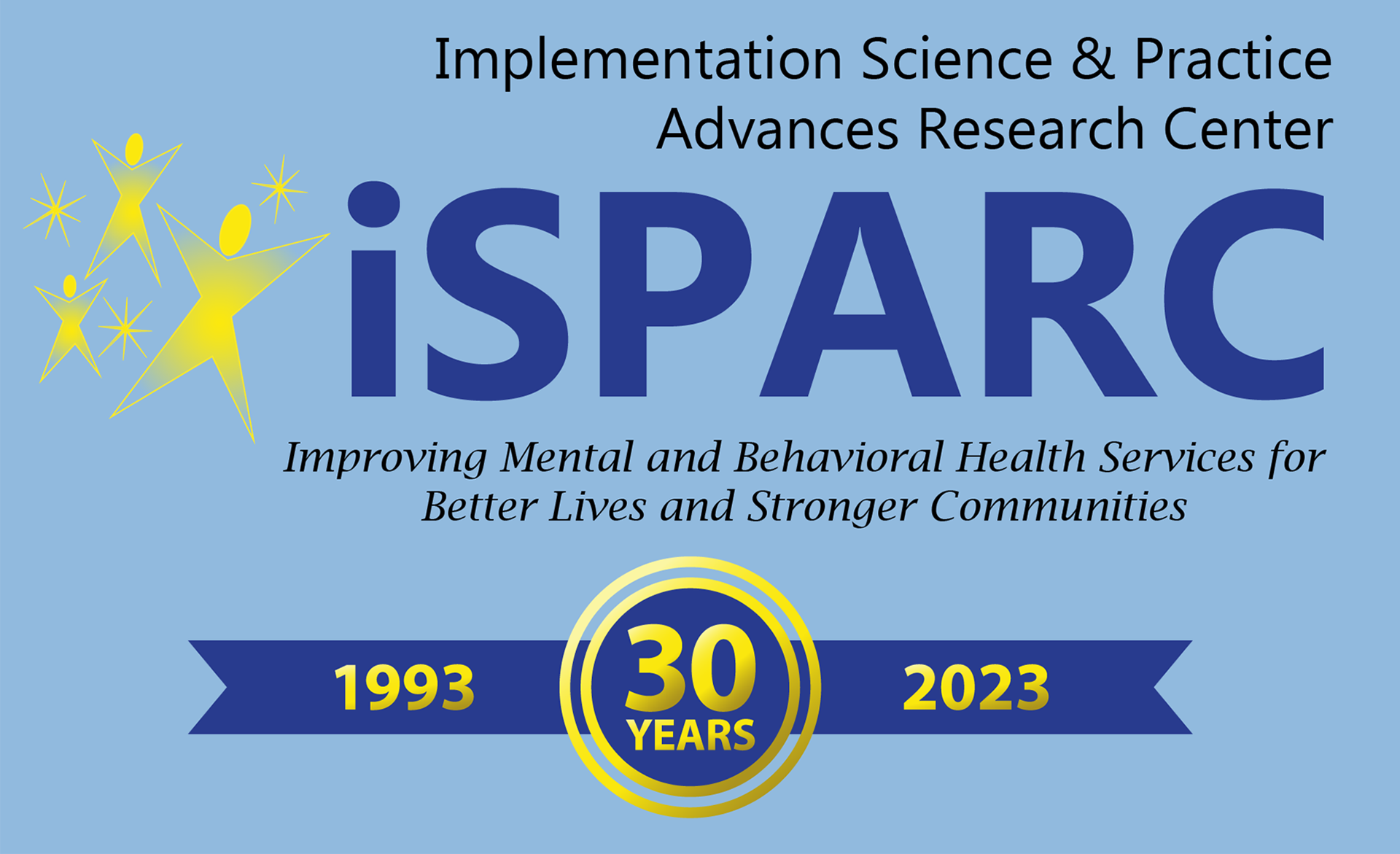Selected Impacts of our Work
 The investment that MA DMH makes in its funding of iSPARC as a Research Center of Excellence provides an impressive return on this investment to the Commonwealth of Massachusetts.
The investment that MA DMH makes in its funding of iSPARC as a Research Center of Excellence provides an impressive return on this investment to the Commonwealth of Massachusetts.
Every $1 invested by MA DMH in FY22 brought to UMass Chan and the Commonwealth of Massachusetts a return of about $9 in funding for our portfolio of research, training, technical assistance, and service delivery.
See the pie chart for iSPARC's different funders in FY22.
DeafYES! Center for Deaf Empowerment and Recovery
Dr. Alexander Wilkins, Co-Director of DeafYES, is currently on the path to achieving independence as a clinician-scientist – to our knowledge, the first Deaf person in the nation to serve as a behavioral therapy clinical trials researcher.
A deaf-accessible version of the Question Persuade Refer (QPR) suicide prevention training – was created by the DeafYES team in partnership with the MA Department of Mental Health. This training is designed for Deaf community members and is available at https://deafyes.org/our-training/
Video: “Sign Here: How to Conduct Informed Consent with Deaf Research Participants” - is part of NIH’s “Guidelines on Communicating Informed Consent for Individuals Who are Deaf or Hard-of-Hearing and Scientists”
https://www.nih.gov/health-information/nih-clinical-research-trials-you/guidelines-communicating-informed-consent-individuals-who-are-deaf-or-hard-hearing-scientists
Law & Psychiatry
Risk Assessment in Juvenile Justice: A Guidebook for Implementation - Produced and disseminated this first (and only) Guidebook on how to effectively implement risk/needs assessment and case planning in justice settings.
Massachusetts Youth Screening Inventory-2 (MAYSI-2) - Developed, normed, and nationally normed this most widely used behavioral health screen in juvenile justice in the United States.
MacArthur Competence Assessment Tool Criminal Adjudication & Juveniles Adjudicative Competence Instrument – These standardized instruments – one for adults and one for juveniles - improved the quality and procedures for competence to stand trial evaluations in the U.S.
Lifeline for Moms
MCPAP for Moms - is an internationally recognized statewide mental health service delivery approach that improves treatment rates and outcomes for perinatal mental health and substance use disorders. It has become a national model for perinatal mental health care, inspiring federal and state-level funding for additional Perinatal Psychiatry Access Programs across the US. https://www.mcpapformoms.org/
Lifeline for Moms National Network of Perinatal Psychiatry Access Programs - There are now 24 funded and operational Perinatal Psychiatry Access Programs in 21 US states with the potential to cover nearly 54% of the 3.7 million US births each year, in addition to two programs available across the US and one Ottawa-based program. https://www.umassmed.edu/lifeline4moms/
The American College of Obstetricians and Gynecologists disseminates our practice-level approach for helping obstetric practices detect, assess, and treat perinatal mood and anxiety disorders.
Transitions to Adulthood Center for Research
Multisystemic Therapy for Emerging Adults – intervention to reduce antisocial behavior, and mental health and substance use disorder symptoms in 17-25-year-olds. The only intervention to date with evidence of efficacy to reduce recidivism in young adults.
Healthy Transitions Initiative – A SAMHSA-funded program that has provided grants to 25 states to improve services for transition-age youth with or at risk of serious mental health conditions. Our research provided the rationale for its launch in 2002 and additional funding for the program over time.
TEST- CTE Guide –guide to promoting Career and Technical Education (CTE) is one of a 3-part set for practicing /implementing best practices in transition planning for secondary students with serious mental health conditions. Promoted in the Department of Labor-funded Social Security Income Youth Solutions as one of “Twelve Ideas to Promote Employment for Youth with Disabilities…”. https://www.mathematica.org/publications/twelve-ideas-to-promote-employment-for-youth-with-disabilities-an-introduction-to-the-ssi-youth
Learn more about the Transitions to Adulthood Center for Research
iSPARC Communications Team
180+ written products - developed to provide current education and information to inform and empower the community of mental health stakeholders in Massachusetts and beyond
300,000+ downloads - of iSPARC’s written products on our website/ e-journal Psychiatry Information in Brief https://repository.escholarship.umassmed.edu/handle/20.500.14038/221
Social Media Impact:
- Developed over 200 videos on cutting-edge mental health topics with over 60K lifetime views worldwide
- 5,000+ followers across its centers and platforms
30 webinars with over 3,000 participants in 5 years
670+ Peer-Reviewed Publications
